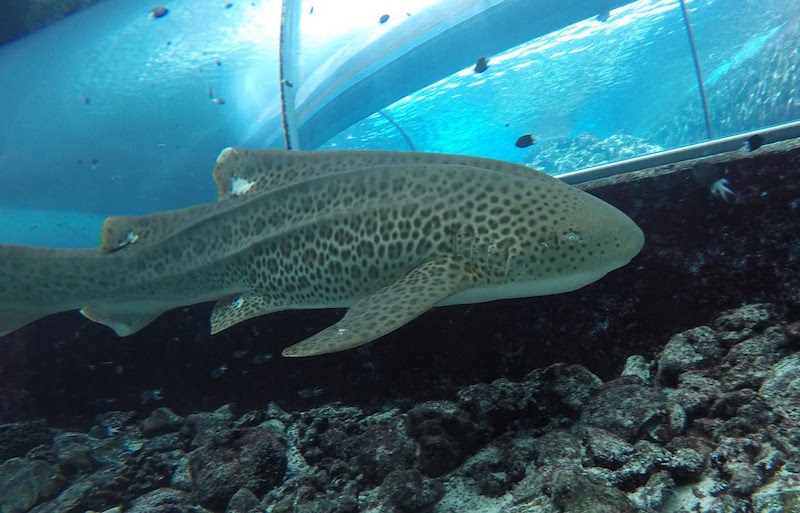A female leopard shark in Townsville Australia has given birth to three adorable shark pups, without a male shark. Although ‘virgin birth’ has been documented before in leopard sharks it is still quite unique for eggs to hatch successfully without fertilization from a male.
Leonie, who is an adult female leopard shark at Reef HQ Great Barrier Reef Aquarium in Townsville laid 41 eggs and three of them hatched. Cleo is the oldest pup at 10 weeks old, follow by CC at 5 weeks and Gemini at 3 weeks. Aquarist Laura Coulton said, “during a virgin birth the mother can only produce females because she can only pass on her genetic information.”

Prior to 2013 Leonie was breeding successfully with a male shark named Leo, and was separated with the shark in 2013. After Leonie began laying eggs without a male in her enclosure, but nothing came of it. This year it came as a surprise when some of the embryos came full term and began hatching.
Ms. Coulton and her team began working with researchers from the University of Queensland to generically test Cleo and find out exactly what had happened. “When the results came back from that – it is definitely an example of parthenogenesis – that is incredible, Ms. Coulton said.
Facultative parthenogenesis is a process of sexual reproduction in which growth and development of embryos occur without fertilisation. It is also known as a “virgin birth”. Cleo was also fortunate enough to be given siblings, with Gemini and CC born soon after, and researchers believe a fourth baby is on the way.

Ms. Coulton and her team said the development is even more amazing because Leonie had already reproduced a pup called Lolly eight years earlier from a fertilised egg.“Something’s changed and Leonie’s been able to switch to this completely different method of reproduction and give birth without a partner,” she said.
And it also appears the phenomenon is not isolated to just Leonine; Lolly is now beginning to start reproducing eggs on her own. “Within the last year (Lolly) has been laying eggs and there’s signs of little embryos developing,” Ms. Coulton said.
“She’s never been housed with a male so there’s every chance she’s decided to follow in mum’s footsteps and produce offspring through parthenogenesis as well.” [9 News]
https://www.youtube.com/watch?v=Ma7RT_zDLqo



